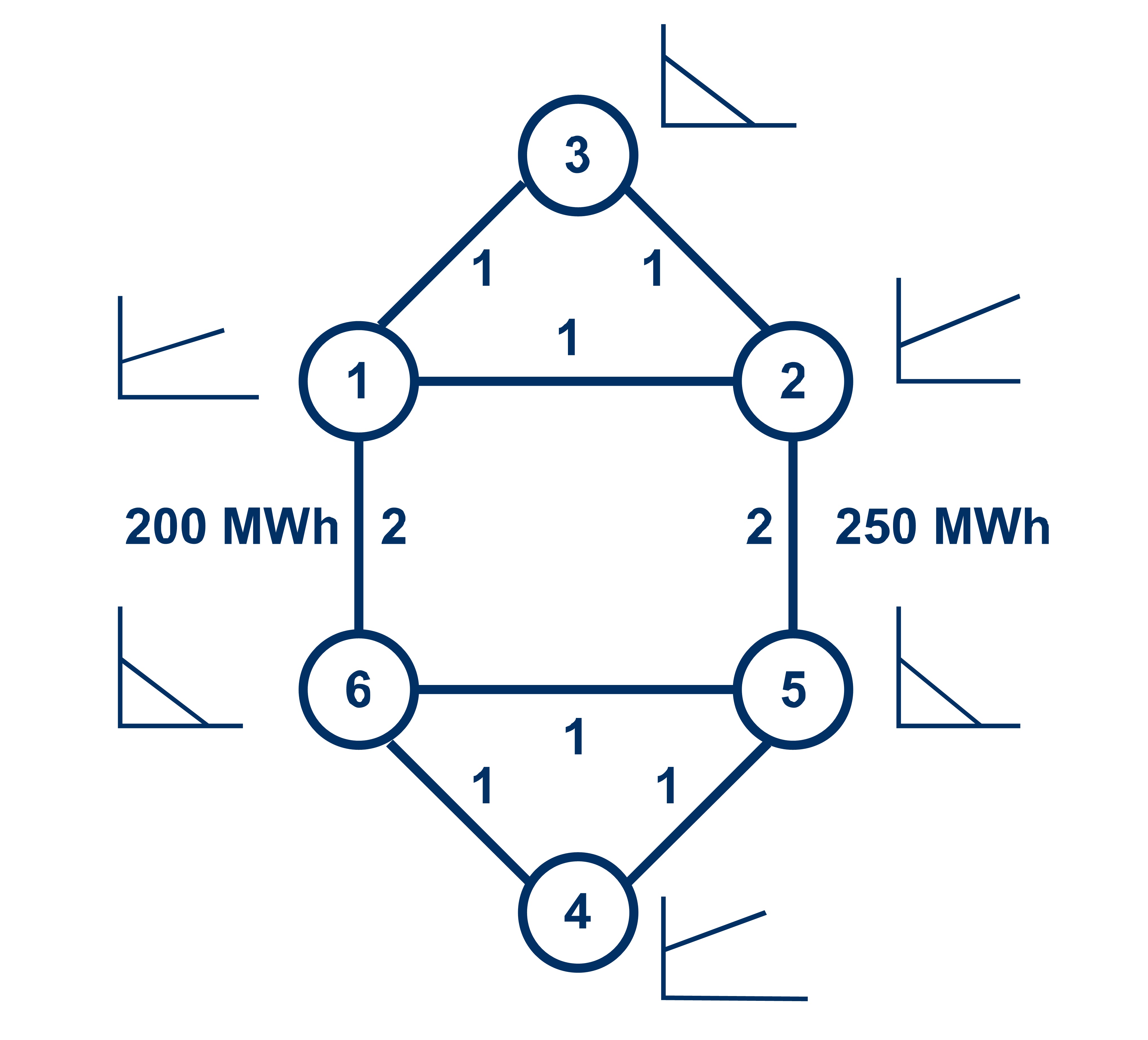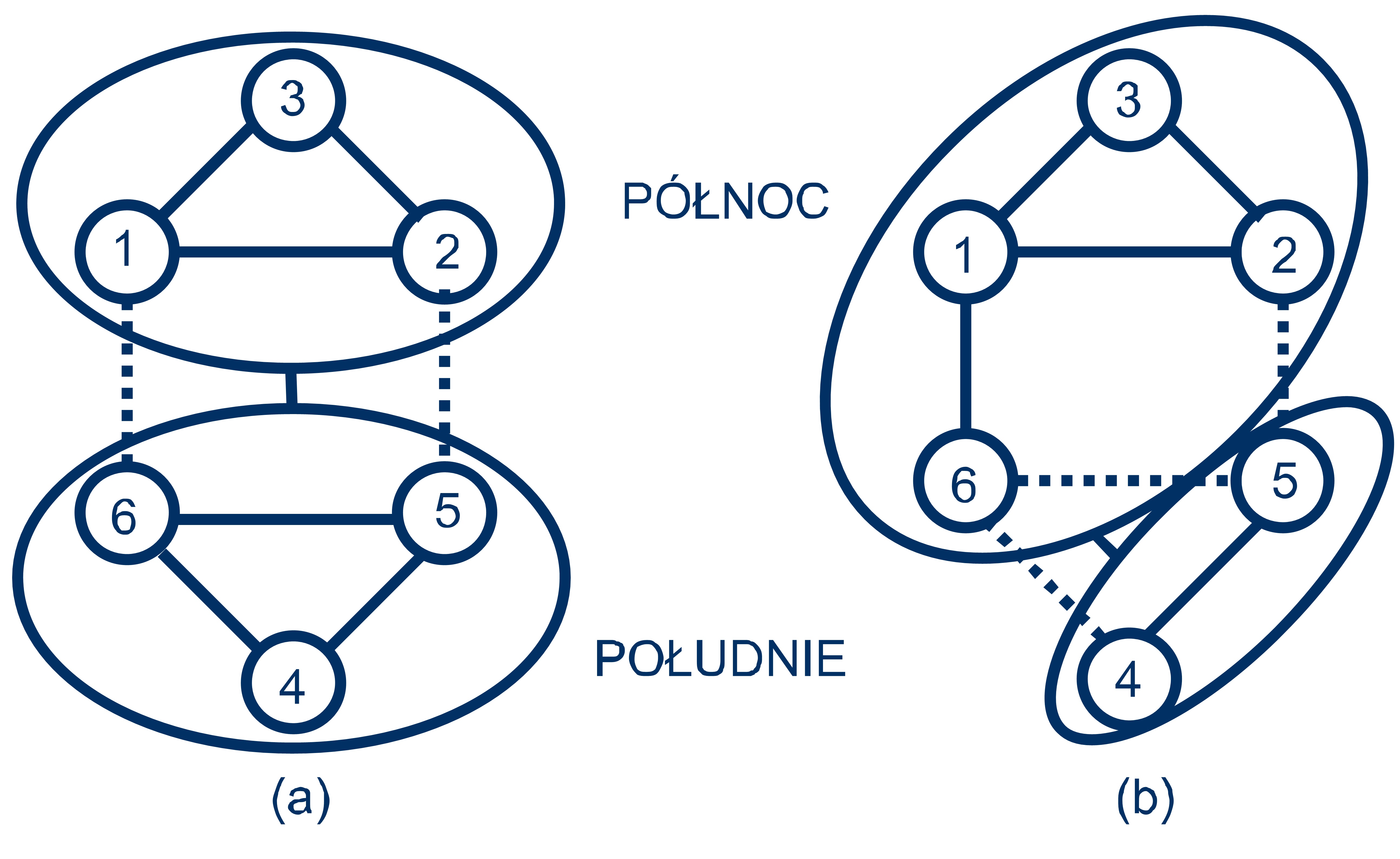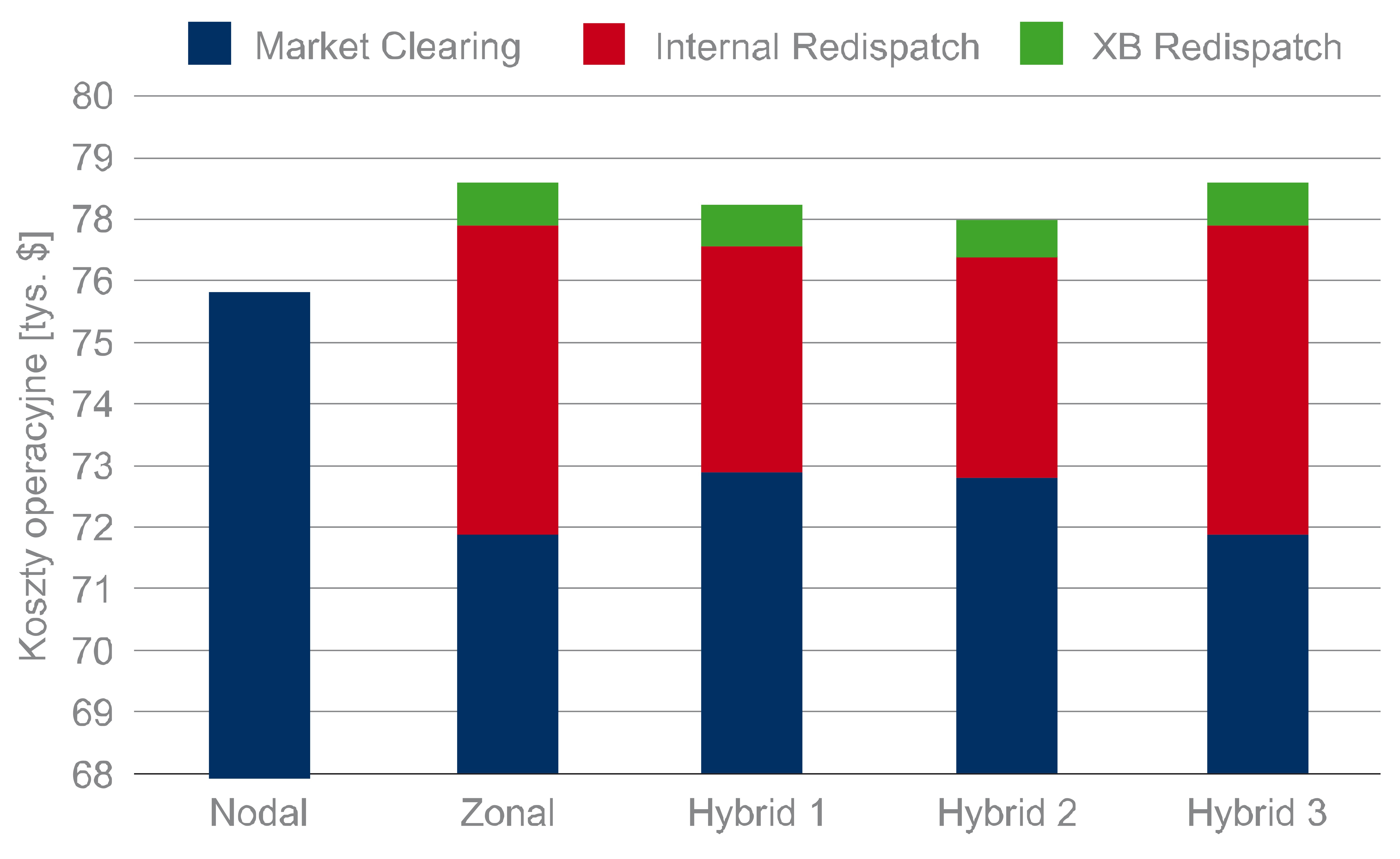Spis treści
Summary of the position of Polskie Sieci Elektroenergetyczne S.A. regarding the proposed model of electricity market set forth in the package “Clean Energy for All Europeans”
SUMMARY
PSE is of the opinion that in order to maintain security and reliability of electricity supplies as well as to ensure effectiveness of electricity market it is necessary to introduce in particular the following changes:
- The present zonal market model should be replaced with a nodal market model. If a simplified zonal model of the system is maintained for the purpose of market processes, it will not be possible for such processes to correctly reflect economic aspects and conditions specified for safe operation of electric power systems.
- Developing a mechanism of procuring electricity and capacity reserves within an integrated process. If electricity and capacity reserves are procured within separate market processes, system resources designed for supplying electricity to consumers are used in an inefficient way.
The market model proposed by the European Commission in the “Clean Energy for All Europeans” package does not offer a possibility to employ the above-mentioned solutions.
Introduction
European electric power systems integrated within the internal electricity market will not be able to operate in a safe and cost-effective manner under the market model proposed in the package “Clean Energy for All Europeans” The reason is that this model is inadequate for challenges faced by European electric power systems where such challenges result from ever-increasing dynamics of electricity generation and flexibility of its consumption (and consequently, increased sensitivity of demand for electricity to prices).
In order to meet these challenges, in the first place it is necessary to effectively coordinate electric power systems using price signals, operation of generation sources and electric loads. Such coordination has to ensure the optimal use of transmission capacities of electric power networks to supply customers with electricity as well as provide support for meeting criteria of secure electricity supplies. To this end, it is necessary to properly price electricity at specific locations which in turn requires proper representation of resources found in the system (networks and generation sources) in market processes and correct organization of such processes.
At the moment, we can see development of distributed generation of electricity. Also changes in technology and price incentives result in increased, though regionally differentiated, flexibility of demand. Unfortunately, simplified solutions adopted in the zonal model of systems still make it impossible to differentiate prices in a proper manner. PSE is of the opinion that
in order to effectively influence resources found in different locations of the system it is necessary to stimulate them in accordance with conditions prevailing in these locations.
The solutions proposed by the European Commission assume that processes of procuring electricity and capacity reserves are separated from one another. This will lead to taking suboptimal market decisions and consequently results attained will be inconsistent with the Commission’s assumptions. In reality, simplification of electricity market thus achieved will enforce an artificial split of system resources between two processes, inflexible use of such resources and, last but not least, their ineffective allocation.
PSE finds the issue of representing network resources in market processes very important for ensuring effective operation of the market, creating an environment for real competition as necessary for market mechanisms, and facilitating secure operation of the system. PSE is of the opinion that separating processes used to procure electricity from those employed to procure capacity reserves will cause additional serious distortion in market processes and will affect the issue of long-term market equilibrium and proper determination of costs of supplying electricity to customers as well as investment decisions of a key importance for ensuring sufficient electricity generation in the future. Considering the above, PSE believes that it is necessary to modify the proposed regulations in order to take account of the above-mentioned aspects of operation of the market.
Specific issues
According to the European Commission, the proposed regulations are meant to ensure effective integration of RES, improve flexibility on demand and supply sides, integrate wholesale and retail markets as well as to determine prices in a manner that reflects competitive relations between supply and demand, and develop long-term markets to provide protection against price volatility. However, at the same time the solutions proposed within the regulation by the European Commission do not support reaching these goals.
Representation of systems in the market model
Maintaining a simplified zonal market model of electric power systems in market processes and excluding the possibility of differentiating actual prices of electricity (prices on the balancing market) within a single zone.
As a result of inappropriate delimitation of zones, such a solution makes it impossible for market processes to correctly reflect economic aspects (in particular costs) and conditions specified for safe operation of electric power systems. Moreover, it will prevent effective coordination of operation of energy sources and electric loads within a given zone in accordance with its diverse conditions.

For this reason, PSE is of the opinion that it is justified to use the smallest possible zones, preferably corresponding to individual nodes of an electric power system (nodal market). The smaller a zone is: (i) the better conditions are for modelling correct electricity prices on a local level (which contributes to improved effectiveness of using resources connected to the network), (ii) the better access to electricity at market prices is offered to customers, and (iii) the wider a range of transmission capacities is offered to market participants under competitive market conditions (which contributes to better effectiveness of use of networks).
| Using the smallest possible zones, preferably corresponding to system nodes, contributes to improved effectiveness of using resources connected to the network. |
In order to effectively determine market equilibrium in a zonal system, it is necessary to assume that unlimited transmission capacities exist within a price zone and properly specify borders of such a zone. It is impossible to fulfil the first of these assumptions in Poland. The principle of one-off determination of zones in Europe according to state borders cannot guarantee that their areas are optimal. Consequently, due to zonal transmission constraints and the risk of improper specification of zone borders, a significant cost of handling intra-zonal congestion is generated by remedial measures, in particular such as redispatching[1] and counter-trading[2].
If it is possible to fulfil the conditions of perfectly coordinated counter-trading (PCCT – cooperation of trans- mission system operators aimed at optimizing total costs of counter-trading), results of balance struck in the nodal and zonal market (with market coupling) environments are not much different from one another. However, in the European market it is difficult to create a real possibility to carry out effective (coordinated) counter-trading (to say nothing of PCCT). In a situation of uncoordinated counter-trading where activities of the other party have to be treated as data, costs depend on market organization – incorrect division into zones as shown in case (b) (fig. 2) may result in extremely high costs of counter-trading. Even though it is only an example analysis, it shows key coordination-related problems in case of zone model of a system (see Ogioni, Smeers 2010).

A solution to this economic problem consists in adopting market model assumptions that reflect the actual structure of the electric power system using nodes and not zones. Such an approach will make it possible to determine electricity prices at individual nodes with actual transmission capacities between them taken into account. If no congestion is present between nodes (or when such congestion exceeds the level of actual demand) in the architecture/structure of zones, costs of neither redispatching nor counter-trading would occur and the expected price of electricity would be the same in both market structures. However, as is seen from simulational analyses (e.g. Mohrhauer 2016) and experience of operators that use the nodal system, costs of counter-measures in a zonal system (both within a zone and between zones) are so high that the effective price of electricity is lower in the nodal solution. Additionally, such a solution facilitates managing the system and reduces a risk that congestion will occur.
One should highlight the fact that counter-trading (and redispatching) are ineffective as congestion management tools. The reason is that they do not promote efficiency-oriented competition on the electricity market and result, as shown in model analyses, in subsidizing investments in generation capacities not where they should be located (see Dijk, Willems 2011). In the effect, it often leads to a need of subsidizing sources that are not profitable at the moment (i.e. such that their marginal cost of electricity generation on an effectively operating market exceeds the equilibrium price) but which are necessary to stabilize the system.
If a nodal market is introduced in a situation where congestion is present within current market zones and between them, prices at individual nodes will be different. This will be a result of prices offered by bidders and notified, simulated or assumed demand. According to analyses, in the environment prevailing in Europe, this may lead to significant price differences, in particular in extraordinary circumstances. Implementation of nodal representation of electric power systems will make it possible for the final electricity price to include different costs related to supplying electricity and maintaining the energy infrastructure. Price differentiation among system nodes in a zone will ensure effective use of generation and transmission capacities for meeting consumers’ demand for electricity and thus will contribute to minimizing total costs of system operation.

a nodal system in one zone. Zone 1: exporter; Zone 2: importer; Zone 3: Exporter with transit flows.
When the demand side is considered, one may expect that such a solution will promote optimizing of decisions taken by companies or consumers of electricity who at the moment make investment decision based on incomplete information. Their plans take account of e.g. differences in quality and prices of labour, transport and telecommunications infrastructure, but cannot include the actual electricity price that would be reflected if a proper representation of the electric power system was used. As a result, behaviours of electricity consumers in the process leading to the market equilibrium in a node-based system may contribute to transforming of demand in a way that allows more effective use of the current electric power infrastructure.
Additionally, if more precise representation of the network is developed, it will be possible for market processes to better meet conditions of secure electricity supply in concluded trade contracts. This in turn will result in limiting the extent and costs of applying remedial measures by system operators in order to meet the security criteria, and consequently reducing costs of electricity supplies imposed on consumers in transmission tariffs. Owing to this, electricity prices will better reflect its actual costs of supply.
Procurement of electricity and capacity reserves
Introducing the requirement of procuring electricity and capacity reserves using separate market processes.
| Separate procurement of the same resources within different processes leads to suboptimal results of market operation. |
In its package “Clean Energy for All Europeans”, the European Commission proposed a solution in which electricity and capacity reserves are procured separately. This was despite the fact that the Code on Balancing adopted by the Commission in March, 2017, provided for the possibility of integrated procurement of electricity and capacity reserves. The solution proposed in the Package will pose an obstacle to reaching a long-term efficiency of electricity markets.
The proposed separation of energy and capacity reserves procurement processes continues the idea that has been present in Europe for a long time, and according to which technical issues, that in particular include maintenance of the required level of capacity reserves, should be separated from trade in electricity. Such an approach was based on the market participants’ support for simplicity in trade in electricity. However, it is now clear that such organization of market processes brings about a seriesof inefficiencies, as a result of which system resources designed for supplying electricity will be used in an inefficient way.
One should note that ensuring capacity reserves will have increasing economic impact as new branches of industry and services, e.g. emission-free automotive sector, develop. It is reasonable that bills for electricity should reflect demand for its higher power (which attracts economic costs of ensuring capacity reserves). As far as electric power systems are concerned, this additionally includes the fact that ensuring access to higher capacity requires guaranteeing adequate system reserves. This is due to competing for the same resources within different processes. Whether given potential of sources is used for supplying electricity or providing capacity reserves, will be determined in two different processes that are independent of one another. In such a situation, the manager of the resource has to allocate it ex ante between different market processes. Potentially, this will lead to reaching suboptimal states of market equilibrium.
As a particular challenge, the TSO has to ensure the required level of long-term capacity reserves. PSE is of the opinion that in order to achieve this goal it is necessary to complement the electricity market with an additional tool designed to ensure capacity reserves, i.e. a capacity market understood as a market of long-term contracts that secure guaranteed deliveries of capacity in the future. Development of RES, highly diverse national energy policies, support for RES, and temporary oversupply result in a long-term drop in wholesale electricity prices to levels that do not give market basis for maintaining them in the future, to say nothing of the estoring of generation capacities of baseload power plants. As a result of decreasing profitability of generation in baseload power plants, it crucially important to ensure a capacity market in order to maintain sufficient generation in short-term and medium-term perspective and, in a longer perspective, to build energy storage facilities in order to allow operation of low-emission electricity markets (generation adequacy). From the PSE’s point of view, capacity mechanisms are a key tool in the process of transforming the electric power system without exposing customersto a risk of blackouts.
PSE expects that regulations adopted by the EU institutions will support development of nodal market and additionally promote or even require the combining of processes used for procuring electricity and capacity reserves. PSE is of the opinion that the appropriate approach consists in working towards the most precise representation of system resources in the market processes as well as ensuring an environment for integrated procurement of electricity and capacity reserves. Such solutions will make it possible to optimally allocate resources and thus effectively determine the total cost of supplying electricity to customers.
Literature
Leigh Hancher, Adrien de Hauteclocque, Małgorzata Sadowska, Capacity mechanisms in the Energy market, Oxford UP 2015.
Tobias Mohrhauer, Comparison of Nodal, Zonal and Hybrid Market Structures with Respect to Operating Cost and Redispatch Volumes. MSc Thesis. EEH – Power Systems Laboratory, Swiss Federal Institute of Technology (ETH), Zurich 2016.
Giorgia Oggioni, Yves Smeers, Market Coupling and the Organization of Counter-Trading: Separating Energy and Transmission Again? Proceedings of Power System Computation 2011.
Justin Dijk, Bert Willems, The effect of counter-trading on competition in electricity markets, Energy Policy, vol. 39, no. 3, 2011.
Laurie van der Burg and Shelagh Whitley, Rethinking power markets: capacity mechanisms and decarbonisation, ODI Report 2016.
[1] Redispatching – a measure triggered by one or more system operators where the generation or load pattern is changed in order to change physical flows within the transmission system and reduce congestions.
[2] Counter-trading – inter-zonal exchange initiated by system operators that is carried out between two bidding zones in order to reduce congestion.










 Prof. Pantelis Capros for WysokieNapiecie.pl: According to our forecasts, most existing hard coal- and lignite-fuelled power plants will continue to rank ahead of CCGT facilities until close to 2030 in terms of variable operating costs, even considering the ETS prices. However, the time horizon until 2030 is too short for the business viability of a new lignite/coal investment.
Prof. Pantelis Capros for WysokieNapiecie.pl: According to our forecasts, most existing hard coal- and lignite-fuelled power plants will continue to rank ahead of CCGT facilities until close to 2030 in terms of variable operating costs, even considering the ETS prices. However, the time horizon until 2030 is too short for the business viability of a new lignite/coal investment.
 The situation on the Polish-German border poses a threat of an uncontrolled outage of the grid in the EU, in a scale comparable to the infamous collapse of the western European power system in November 2006, Polish power grid operator warns in a report. The Polish government is asking the EU energy commissioner for help.
The situation on the Polish-German border poses a threat of an uncontrolled outage of the grid in the EU, in a scale comparable to the infamous collapse of the western European power system in November 2006, Polish power grid operator warns in a report. The Polish government is asking the EU energy commissioner for help. Poland's biggest power concern, state-run Polska Grupa Energetyczna (PGE) has recently written off some PLN 9 bln (EUR 2.1 bln) in a revaluation of its key power plants and plans to revise its business strategy. The group will scale down investments, attempt to cut costs and place more focus on the diversification of the fuel mix.
Poland's biggest power concern, state-run Polska Grupa Energetyczna (PGE) has recently written off some PLN 9 bln (EUR 2.1 bln) in a revaluation of its key power plants and plans to revise its business strategy. The group will scale down investments, attempt to cut costs and place more focus on the diversification of the fuel mix. 